10 Wildest Cellphones of All Time
Remember when cellphones weren't all just boring touchscreen slabs? Yes, it's nice to see companies experimenting with different colors and textures. But today's handsets aren't anywhere near as inventive or fun as these bold statements. We're talking about dual-sided phones and dual sliders, as well as devices with magnetic keyboards and integrated Bluetooth headsets. There was even a phone made to resemble lipstick. (One of these models is from 2011, so there's still hope yet for a less boring future.) Here are the 10 wildest cellphone designs of all time.
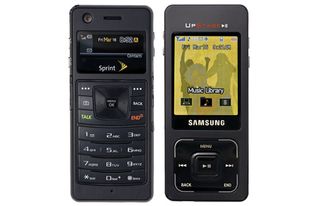
Samsung Upstage (2007)
The Upstage was an exciting convergence experiment that resulted in a design with a music player on one side and a phone on the other. The media side had a directional pad and 2.1-inch color screen, while the keypad and smaller 1.4-inch screen was on the other half. The need to press a Flip button to switch modes and short 2.5 hours of talk time were turn-offs, but it paved the way for better media integration in phones. Read the Samsung Upstage Review
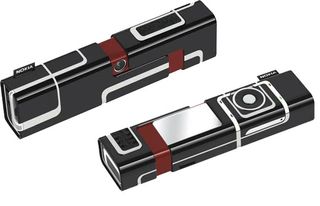
Nokia 7280 (2005)
Inspired by the glamor of the 1920s, the art-deco-influenced Nokia 7280 looked more like a stylish cigarette lighter or tube of lipstick than a phone. It ditched a keypad in favor of a dial wheel and voice recognition for making calls and navigating menus. Calls were answered with a flick of the wrist to open the phone’s sliding mechanism, which also revealed the VGA camera lens. The best part for fashionistas: the screen turned to a mirrored surface when inactive. Read the 10 Most Stylish Smartphones
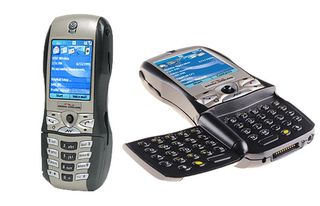
Sierra Wireless Voq (2005)
Most people forget that modem maker Sierra Wireless tried its hand at smartphones, and the Voq was certainly unique. This Windows Mobile device featured a fold-out thumb keyboard that made for a more comfortable typing experience than competing phones. At .8 inches thick and 5 ounces, the Voq was ultimately too bulky and heavy, but we liked the vivid 2.2-inch screen, zippy 200-MHz XScale processor and Outlook integration. Read the Top 25 Windows Phone Apps
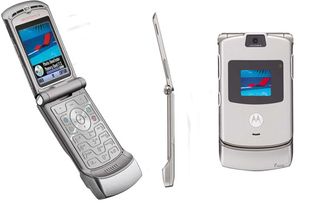
Motorola RAZR V3 (2004)
On the surface the RAZR V3 was just an evolved version of the clamshell phone, but it truly was a breakthrough device. Motorola used aircraft-grade aluminum and new design techniques to achieve an unbelievably slim .54-inch profile. This 3.4-ounce wonder also threw out the traditional dialpad for a precision-cut electroluminescent keypad with a Tron-like pattern. The specs were pretty beefy too given the RAZR V3's size, including a VGA camera, 2.2-inch color screen, and Bluetooth. Motorola nearly ruined this brand by churning out too many sequels, but revived it with the Android-powered Droid RAZR and Droid RAZR Maxx. Check Out Our Droid RAZR and Droid RAZR Maxx Reviews
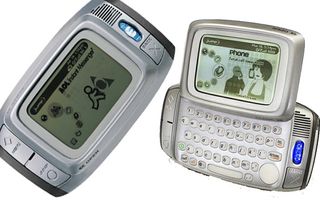
Danger Hiptop/Sidekick (2002)
Back in the day the original T-Mobile Sidekick was the ultimate messaging device-phone combo for hipsters--long before Paris Hilton's got hacked. A first-of-its-kind swivel design revealed a comfortable backlit keyboard, while a jog wheel and Jump buttons made the slick interface easy to navigate. So what if this 6.2-ounce device had a monochrome screen and you had a camera separately. It had everything messaging mavens needed, including a web browser, e-mail and lots and lots of cachet. Read the Best Smartphones With Real Keyboards
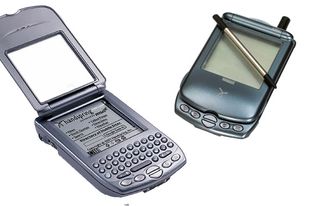
Handspring Treo 180 (2002)
You might not remember this, but the now defunct Palm acquired Handspring in June of 2003, and this phone was a key reason why. The Treo 180 was a breakthrough because it elegantly combined a PDA and phone in a slim design with a full keyboard. The hybrid made competing devices like the Kyocera QCP-6035 look like a brick by comparison. The flip-up cover with clear plastic window was another really nice touch, making it easy to cradle the phone against your face when gabbing. The follow-up version, the Treo 270, would add a color screen. Read 15 Current Technologies My Newborn Son Won't Use
Stay in the know with Laptop Mag
Get our in-depth reviews, helpful tips, great deals, and the biggest news stories delivered to your inbox.
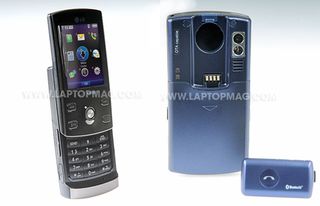
LG Decoy (2008)
Two of the biggest complaints people have about Bluetooth headsets is that you need to charge them--and that they're easy to lose. LG ambitiously attempted to address those issues with the Decoy for Verizon Wireless, which had a holster for a Bluetooth earpiece right on the back of the phone. Charging the handset charged the headset. The five-way joystick control was a bit small for our tastes, but we appreciated the innovative design, not to mention the bright 2.2-inch screen and built-in GPS navigation. Read the Original LG Decoy Review
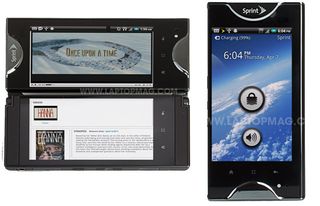
Kyocera Echo (2011)
Some day we'll be able to stretch our smartphone screens out to the size we want and make them smaller with a pinch gesture. But Kyocera came very close to that reality with the Echo phone for Sprint. It combined two 3.5-inch touch screens using a sturdy copper alloy hinge. Together, the displays gave users a whopping 960 x 800 pixels, and a handful of apps enabled users to run one one top and one on the bottom at the same time. While the 6.8-ounce weight and lack of 4G were definite drawbacks, we seemed to like this phone a lot more than shoppers did. Read the Kyocera Echo Review
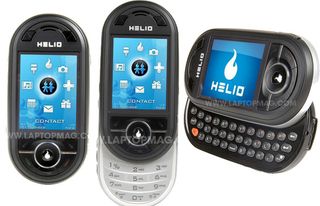
Helio Ocean (2007)
Remember MVNOs? Riding on Sprint's network, Helio catered to a younger, hipper MySpace crowd (this was 2007) with this flagship device. What made the Ocean special was its dual-sliding design. It sported both a traditional dialpad and QWERTY keyboard. We dug the soft-touch finish on the 5.6-once oval design. The interface was equalling compelling, with built-in presence capability for instant messaging, a universal search feature that pinged Amazon, Google, Wikipedia, Yahoo and Yelp and a vast menu of streaming video options. Read the Helio Ocean Review
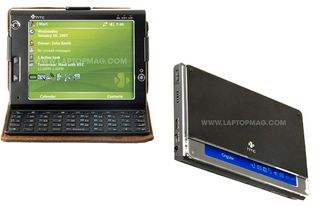
HTC Advantage (2007)
A precursor to superphones like the Galaxy Note, the Windows Moible-powered HTC Advantage sported a monstrous 5-inch VGA screen and a magnetic keyboard that attached to the bottom. When closed, a see-through panel in the keyboard let you see the time, signal strength and battery meter. At a hefty 13 ounces, the Advantage was a lot to carry, but HTC included a handy leather carrying case. A 624-MHz processor made this device an intriguing alternative to UMPCs (remember those?), but at $899 unlocked this PDA-phone combo was just too pricey for the masses. Check Out Today's 5-inch Superphone, the Galaxy Note
